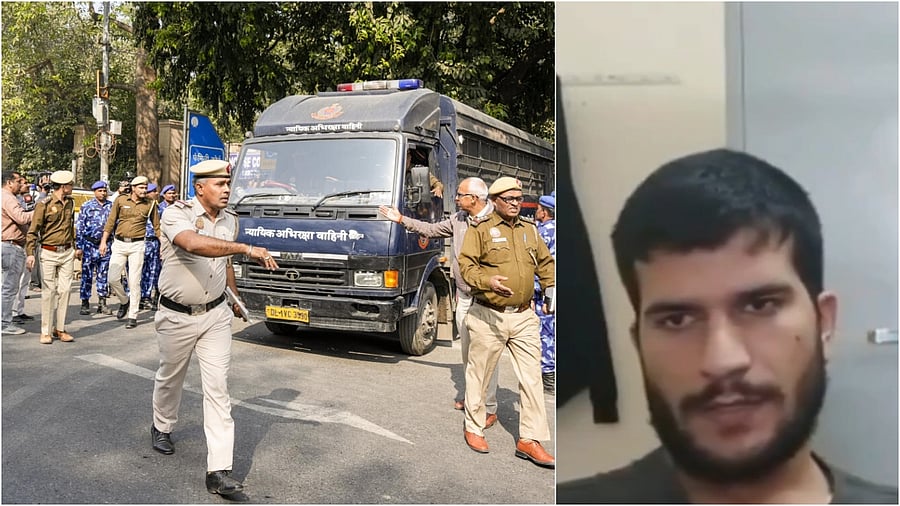
Accused Amir Rashid Ali (unseen), who was arrested by the National Investigation Agency (NIA), being taken from Patiala House Court, in New Delhi(L), Umar Nabi, suicide bomber in Delhi blast case
Credit: PTI Photo, X
Srinagar: The Red Fort suicide blast probe has uncovered a chilling portrait of a radicalised young doctor who left behind videos justifying suicide attacks as “martyrdom operations” and was allegedly preparing a major terror strike for next month.
Dr Umar-un-Nabi, the 28-year-old Pulwama doctor who drove the explosive-laden Hyundai i20 that blew up outside Red Fort killing at least 15 people, had recorded multiple videos describing suicide bombings as “martyrdom operations”, officials said.
One such clip, recovered from his damaged mobile phone, shows him saying: “One of the very misunderstood concept is what has been labelled suicide bombing. It is a martyrdom operation.”
The phone—retrieved from a water body after Umar’s brother Zahoor Illahi broke down during interrogation—has become the centrepiece of the probe. Forensic experts have reportedly extracted data despite extensive water damage, uncovering ISIS and Al-Qaeda propaganda, radical sermons, and videos of Umar explaining and defending suicide attacks. The device has since been handed over to the National Investigation Agency (NIA).
Investigators say Umar’s radicalisation deepened after a 2021 trip to Turkey with co-accused Dr Muzammil Ahmad Ganaie, a faculty member at Al Falah University, where the two allegedly met Jaish-e-Mohammed overground workers. This marked the beginning of a covert radical network involving doctors, students and professionals—one that police now believe was preparing for Hamas-style attacks in urban centres.
The trail began in mid-October, when JeM posters surfaced in Srinagar’s Nowgam locality. Subsequent arrests of three locals with stone-pelting histories led police to Maulvi Irfan Ahmad, a former paramedic-turned-Imam accused of supplying the posters and influencing several members of the module. From there, links to Ganaie emerged—and with them, a cache of nearly 360 kg of ammonium nitrate, potassium nitrate and sulphur stored near Al Falah University.
Officials now believe Umar was planning a high-intensity VBIED strike around December 6, the anniversary of the Babri Masjid demolition, potentially targeting a religious site or crowded public place. That plan appears to have collapsed after the Srinagar police arrested Ganaie and seized the explosives, prompting Umar to accelerate—or mishandle—his operation in Delhi.
A crucial lead surfaced when Zahoor disclosed that Umar had briefly returned to Kashmir between October 26 and 29. Before leaving, he handed over his phone and told his brother to “dump it in water” if his name ever appeared in the news. Zahoor later guided police to the spot where he disposed of it.
The investigation also points to the involvement of at least one more active conspirator—Jasir Bilal Wani alias Danish, arrested recently in Srinagar—whose role police sources describe as “significant”.
With multiple agency teams on the ground, officials say the picture that is emerging is not of a lone wolf but of a trained, ideologically driven medical professional who headed a dispersed, educated cell preparing for mass-casualty attacks. The NIA is now building what officers call “a larger conspiracy case” that could lead to more arrests across states.